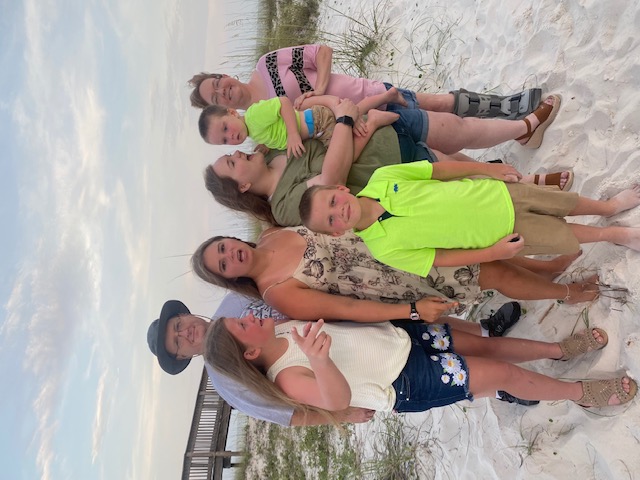Computer science teacher Suzy Lebo saw covid-19 dangers frequently in her Indiana high school: classes with about 30 students sitting less than 18 inches apart. Students crowding teachers in hallways. Students and staff members taking off their masks around others.
“I’m concerned,” said Lebo, who teaches at Avon High School in the Indianapolis suburbs. “We’re not controlling the virus in our county. We’re not controlling it in our state. And we’re not controlling it in our schools.”
President Joe Biden’s covid response proposes $130 billion to improve school safety, offers federal guidance for making schools safer and improves workplace protections to safeguard teachers and other workers from covid.

This comes after many school districts and states holding in-person classes have ignored recommendations from public health officials or written their own questionable safety rules — creating a tinderbox where covid can sicken and kill.
A KHN analysis of federal and state Occupational Safety and Health Administration data found more than 780 covid-related complaints covering more than 2,000 public and private K-12 schools. But those pleas for help likely represent only a small portion of the problems, because a federal loophole prevents public school employees from lodging them in 24 states without their own OSHA agencies or federally approved programs for local and state employees. Still, the complaints filed provide a window into the safety lapses: Employees reported sick children coming to school, maskless students and teachers less than 6 feet apart, and administrators minimizing the dangers of the virus and punishing teachers who spoke out.
KHN also found that practices contradicting safety experts’ advice are codified into the patchwork of covid rules put out by states and districts. For instance, about half of states don’t require masks for all students — including 11 that have exempted schoolchildren of various ages from mandatory masks, with New Hampshire excluding all K-12 students. Districts can craft stricter rules than their states but often don’t.
“The response to the virus has been politicized,” said Dr. Chandy John, an expert in pediatric infectious diseases at the Indiana University School of Medicine. “There’s a willingness to ignore data and facts and go with whatever you’re hearing from the internet or from political leaders who don’t have any scientific knowledge.”
But even with Biden’s rollout of new school safety steps, struggles over balancing the need for education with covid safety are sure to continue, since it will be months before the nationwide vaccine rollout reaches all school staff members, and the shots haven’t yet been approved for kids.
Meanwhile, the scope of covid in schools remains unknown. Biden’s order calls for tracking it on the federal level, which wasn’t happening. States haven’t collected uniform data either. The Covid Monitor, a project launched by volunteers and public health researchers, has counted more than 505,000 cases in K-12 schools — more than a quarter of them among staffers. Although kids are less likely than adults to become seriously ill, recent research suggests they can spread the virus even if asymptomatic. The American Federation of Teachers estimates covid-19 has killed at least 325 school employees, though it’s unclear whether they caught it at school.
Among them was Susanne Michael, 47, a fourth grade teacher at Harrisburg Elementary School in northeastern Arkansas. As a cancer survivor with diabetes, she rarely went anywhere outside her home this past fall, according to her husband, Keith. She told him she worried about catching the coronavirus while teaching, but she “went and did it because she loved it.”
She tried her best to keep more than 20 students 6 feet apart, he said, but told him it was nearly impossible.
Though she always wore a mask, he doesn’t know if every student did. According to the district’s website, masks are required in grades 4-12 “when social distancing is not feasible,” and “physical distancing will be practiced to the extent practical.” District leaders did not respond to requests for comment.
Michael wound up hospitalized on a ventilator. Doctors let her husband visit in protective gear because he, too, had the virus. He held her hand as she slipped away Oct. 1.
The loss hits him hardest at night. “For 27 years, I always had somebody there next to me,” he said. “It’s difficult and weighs on your mind and heart a lot when you’re laying there in an empty bed and your best friend’s gone.”
She left five children, ages 3 to 22, including a former student and her two siblings adopted in July.
A Litany of Lapses
Doctors said covid risks can be drastically reduced by following straightforward safety practices.
“First and foremost, mask mandate, mask mandate, mask mandate,” said Dr. Jason Newland, a pediatrics and infectious diseases professor at Washington University in St. Louis.
But school employees across the nation complain such measures don’t exist or aren’t enforced.
“School officials openly scoff at covid-19 and believe it is a hoax. This attitude trickles down to staff, so hardly anyone has been wearing their mask or wearing it correctly,” an unidentified employee of Hart Public Schools, in rural western Michigan, wrote in an OSHA complaint in September. The complaint also described large crowds of students sitting too close in cafeterias. The employee alleges being terminated for whistleblowing.
Hart Superintendent Mark Platt said in an email that he won’t comment on personnel matters, but “takes seriously its health and safety protocols for students and staff.” The district’s covid preparedness and response plan requires staffers and older students to wear masks in classrooms, common areas and buses, while K-5 students must wear them everywhere except in their own classrooms with their own class.
At the public Avon Community School Corp. in Indiana, Lebo said, problems festered since the beginning of the fall semester in July, when an OSHA complaint was lodged. In addition to crowding in the halls and difficulty keeping students 6 feet apart in classrooms, Lebo said, the school’s many extracurricular activities — including football, wrestling and show choir — brought their own risks.
Avon schools spokesperson Kevin Carr wouldn’t comment except to say students and staff members have tried their best to abide by the district’s health and safety protocols.
Over the semester ending in December, Avon schools reported 346 covid cases among nearly 9,800 in-person students and staffers, a rate of 3.5% compared with 2.1% for 1,412 remote learners. The covid rate reached 5.5% at the high school, which went remote briefly in the fall after the number of people quarantining skyrocketed.
Like the vast majority of school OSHA complaints, the one about Avon was closed without an inspection. Across all industries, research shows, just a small percentage of pandemic-related complaints have led to inspections or fines.
A Biden executive order on worker safety calls for OSHA to bolster enforcement and work with states and local governments to ensure workers, including those in the public sector, are protected from covid.
Without strong laws, “workers are facing big challenges: Do I speak up? Do I show up to work?” said Rebecca Reindel, director of occupational safety and health for the AFL-CIO. “They’re making a decision between needing a paycheck and risking bringing the virus home.”
Varied, Questionable Guidance
That decision gets even harder when potentially unsafe practices are written into official recommendations.
Missouri and Iowa, for example, advise that students exposed to covid don’t need to be quarantined as long as infected and exposed children are both wearing masks correctly — which goes against Centers for Disease Control and Prevention advice to quarantine anyone who has had close contact with a person who has the virus.
Some districts in South Carolina, Tennessee, Florida and Nebraska — with green lights from the Trump administration and their states — classified teachers as “critical infrastructure workers,” allowing them to keep working after exposure if they don’t develop symptoms.
A superintendent in Billings, Montana, told administrators in October to “disrupt the 15-minute timeline” required to be deemed a close contact “through movement, distancing or masking.” Following media reports, he issued a statement saying he hadn’t intended to “game the system” and no one should move students to avoid quarantines.
In many communities, mask rules are lax.
In Missouri, where there’s no statewide mask rule, Ozark School District requires them only “when social distancing is not an option,” according to its website, which describes spacing desks and using barriers to give people a “break” from masks.
Lakeland Joint School District in Idaho recommends masks when physical distancing isn’t possible. Dacia Chaffee, parent of an eighth grader and a high school freshman in the district, said “it’s almost like normal,” with few students wearing masks. Her kids don’t either, she said; they don’t want to stand out.
Public health experts said making schools safer will require clear, consistent data and guidance — and political will. They said governments also need to give public schools enough resources to keep more than 50 million students and 3.2 million teachers safe. A recent CDC report estimated that the cost of covid mitigation measures for the 2020-21 school year ranges from $55 per student for items such as masks, plexiglass barriers and face shields to $442 per student with added custodians and transportation, such as buses and drivers, to allow for better physical distancing.
And crucially, experts said, covid policies for schools must be rooted in science, not politics.
“Behaviors and attitudes flow from the top down,” said Dr. Mark Schleiss, a pediatrics professor at the University of Minnesota Medical School. “We have to hold people accountable. This is a life-and-death situation.”







